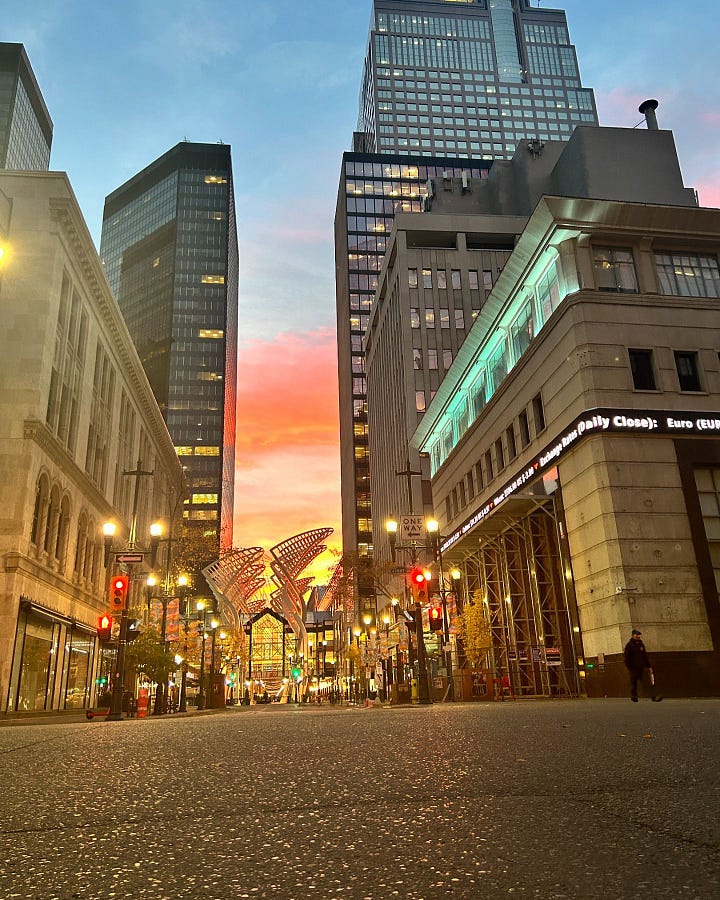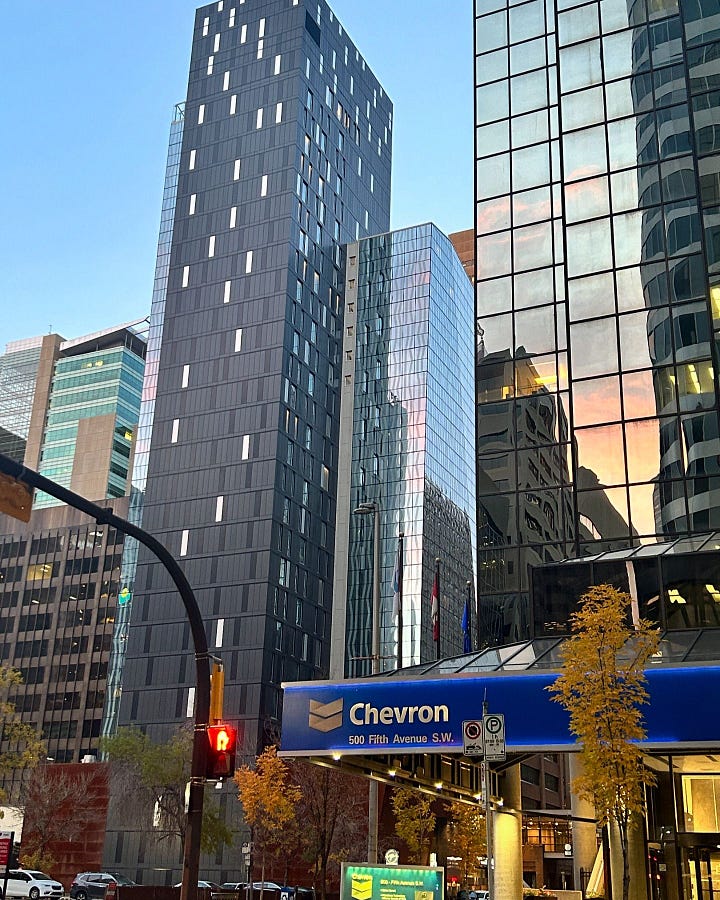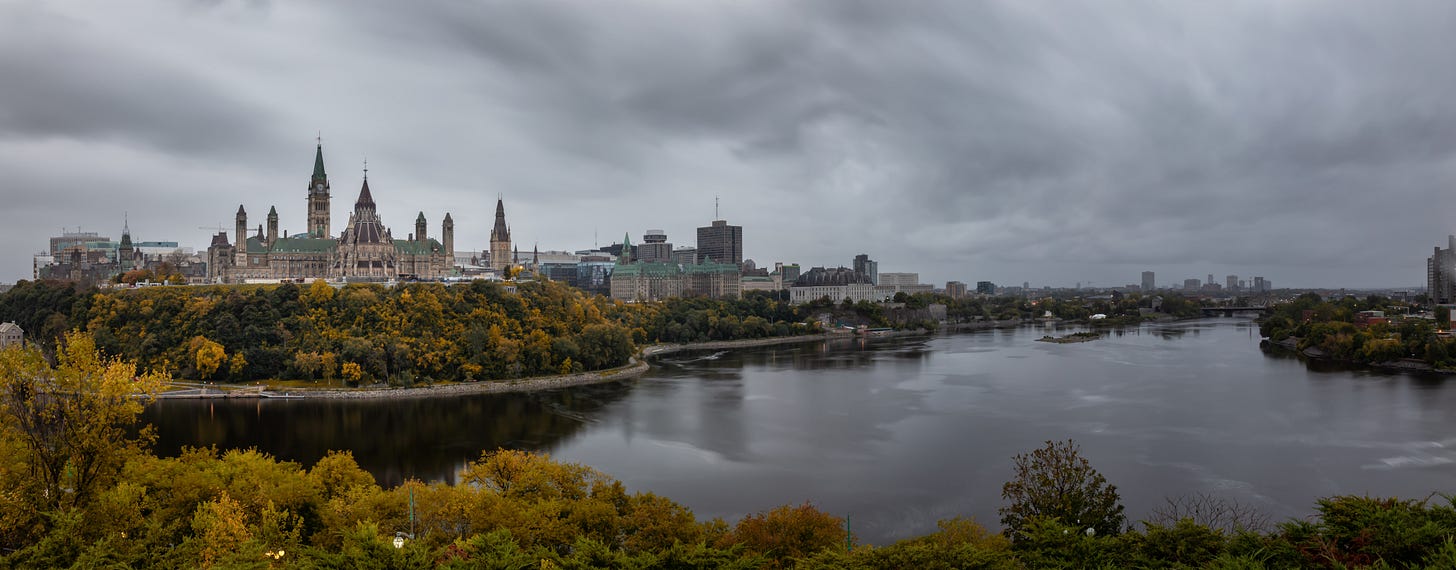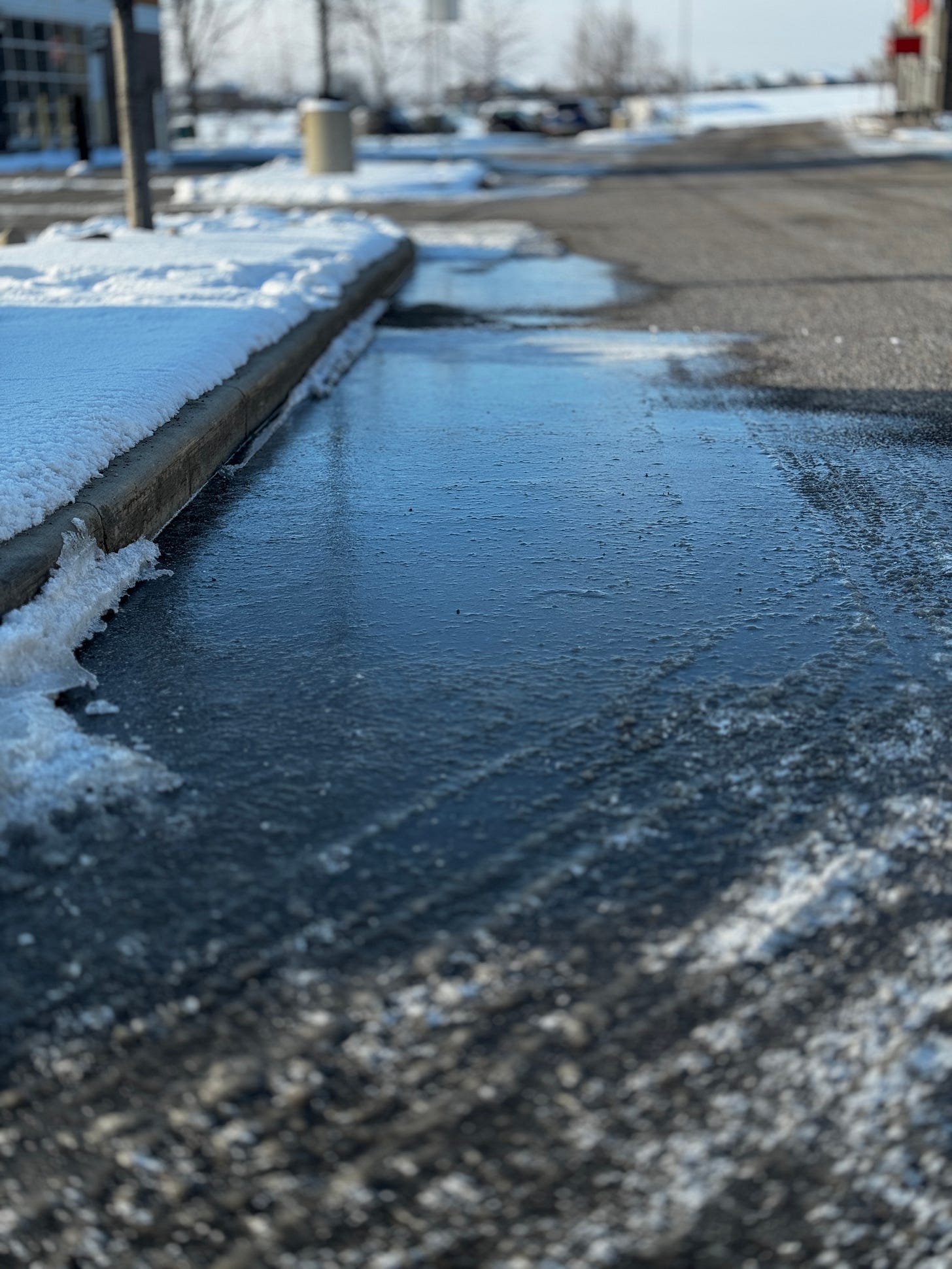The Canadian 3-Month Settlement Guide For Newcomers Sans Kids
Cos we all needed something like this when we landed in Canada.
Please forward this to ONE friend today and tell them to subscribe here.Settling into a new country is overwhelming. I know this. Maryam does too.
So, when Maryam and I decided to write the Canadian relocation guide, the hope was that anyone who just landed in Canada or was planning to relocate here would come across this living, breathing doc and be better prepared for all the mental and physical chaos that comes with immigration.
Reading this guide won’t make settling into Canada feel like sunshine and rainbows. However, you’ll at least know how to handle most of what our new home throws your way.
If you’ve found your footing already and there’s something you think we missed or should add, please leave a comment and I’ll be sure to reach out.
Before You Board Your Flight
Plan for the weather. Are you traveling in winter, summer, or spring? Canada has four seasons - winter, spring, summer, and fall. Long time Canadians will disagree and say we’ve got only winter and summer.
If your trip falls between May - August, expect the weather to be warm most of the time. So, travel with comfortable, lightweight clothes you would typically wear on a hot day. You don’t need to over-plan if you are travelling during late spring and summer. Winter, however, is another story.
You need to plan for winter gear though, regardless of the season you plan to arrive.
In cities like Calgary, it starts to feel cold around mid-September as temperatures begin to drop. However, the first noticeable frost can occur as early as late September or early October. Snowfall often arrives in October, signaling the start of colder weather, but the winter chill sets in by November.
The winter season officially starts in mid-to-late November and lasts until early March, with average daily temperatures falling below 3°C (38°F). January is typically the coldest month, with temperatures often dropping below -20°C (-4°F).
If you are arriving during this period, get your winter coats and boots before you travel.
Pro-tip: If arriving from West African tropical climates, you’d find these coats in thrift markets like Yaba (Lagos, Nigeria), or Kantamato Market (Accra, Ghana). Also, look for pieces with down material, and make sure your winter boots have good traction. Canada roads are notorious for black ice during winter. And falls are dangerous because you can’t control yourself while falling which can lead to life-changing injuries.
Pack right. Shrinking decades of your life into two or three bags isn’t an easy task. I would say that you prioritize essentials like toiletries or things you can’t do without over items like clothing. Why? You can easily replace clothing but might struggle to find where to buy a comforting spice or a local dish in your first few weeks.
When Maryam moved in 2020, dry food items were the bulk of her luggage. Make sure to check the official list of prohibited food items in Canada. You don’t want to haul your luggage through the airport and to Canada and have it’s content seized and destroyed by a Canadian border official.
Pro-tip: You may need to seal your bags with cellophane wrap to protect the integrity of the items you’re carrying. As long as you’re not transporting contraband items or items that resemble contraband, you don’t have cause to worry about a luggage search.
Secure temporary accommodation before you land. The first and best choice in my opinion is to find family or friends you can stay with for a few weeks. If you’re as lucky as me, you’ll have someone who can house you for two months or till you’re able to rent a place. If that’s not an option, an AirBnB is your best bet.
Start booking informational interviews. They are your best job hunting hack because they expose you to the hidden Canadian job market. LinkedIn is a gold mine for informal conversations. Identify industry pros you want to talk to. Bonus points if you have a mutual connection. Then send them a DM asking for a virtual coffee chat. A polite one off course. Platforms like 2StepCanada are also able to help you land informational interviews in your industry.
Exchange your money. It’s usually more convenient to convert your settlement funds into Canadian dollars in your home country. The airport bureau de change markups and commission fees can be steep. If you’re landing with more than CAN$10,000 (or the equivalent in foreign currency), you must declare this amount to a Canada Border Services Agency (CBSA) officer.
If you need to transfer money from your home country to Canada, international transfer platforms like Expedier, Wise, Lemfi, Zole App, and Remitly are some of the best solutions to move money from your home country into your Canadian bank account.
Your First Week in Canada
Get your social insurance number (SIN). Your SIN is a nine-digit number that allows you work in Canada or access government programs and benefits such as Employment Insurance (EI). You’ll need a SIN if you’re a permanent resident (PR) or on a student or work visa. You can apply online or by mail.
It should take between 5-25 days. But you can get it faster if you request online delivery by email. The Government of Canada website is the best place to find out what documents you need to provide. You can also start your online application via the same webpage.
Pro-tip: Your SIN is private and must not be shared unless absolutely necessary as it can be used for identity theft and fraud. Some instances where it’s necessary to disclose your SIN include:
When you need to open interest-bearing bank accounts
When you need to file taxes
When you need to report your income and deductions to the Canada Revenue Agency (CRA)
When you need to apply for government benefits and services
Find your provincial office. Canadian provincial offices or registries in some provinces are places where you can apply for your driver’s license, health cards, parking permit, and most documentation you need to fill during those early confusing days. I recommend checking their website to see what services they offer and if they offer the option of applying online.
Apply for your health card. While Canada does not have a universal national health insurance plan, each province offers individual health care programs that cover different services and products. For example, British Columbia has the Medical Services Plan (MSP) while Ontario has the Ontario Health Insurance Plan (OHIP) for permanent residents, citizens and work permit holders of up to six months. British Columbia’s MSP pays for basic, medically required health services. These include some doctor visits, select medical tests, and treatments.
Not all health costs are covered. Here’s a highlight of benefits covered in each province. Your health card allows you access healthcare services in your province.
Open your bank account. Canada’s banking system has traditional banks, credit unions, and online-only banks, or “neo banks.” If you migrated to the francophone areas, you’ll also come across the caisses populaires. Most newcomers open a chequing or savings account with the Big Five—the five largest banks in Canada. NerdWallet ranked BMO, CIBC, RBC, Simplii Financial, TD Bank, Scotia Bank, and National Bank as some of the best banks for newcomers, based on the perks and features they offer.
Apply for a credit card. Some banks will offer you a credit card once you open an account. But if they don’t, you need to apply for one yourself. Canada is a credit-based economy and your credit score influences renting a home, interest rates the banks or lenders offer you if you need a loan or try to lease a car, and your eligibility for personal loans, mortgages, and any other form of financing.
It is recommended that you spend no more than 30% of your credit at a time. This adds to your credit score and demonstrates to lenders that you’re not a high risk spender. In instances where you lose your card or suspect credit card fraud has been committed against you, call your bank immediately to cancel the card.
Get your public transit pass. I love Uber, but those rides can rack up your monthly costs. Canada’s public transit is nothing close to what you’ll find in Europe but it still works. In most provinces, you’ll find buses, streetcars, subways, light-rail transit, and ferries in the case of Atlantic Canada and British Columbia. The public transit systems often use a single pass that supports different types of fares, monthly and annual passes, and mobile wallet integration in provinces like Ontario. You can purchase the transit pass at the transit terminals, select retailers like Walmart, and online via the transit authority’s website.
If you’re an international student, check if your school or region offers the Universal Transit Pass (U-Pass) discounted or unlimited transit access program. If your school doesn’t offer the U-Pass program, check with the transit authority to see what student discounts you’re eligible for.
Your First Month in Canada


Start your graduated driver’s licence (GDL) process. The GDL program is a multi stage process for new drivers in Canada. All newcomers (except those with North American drivers licenses) regardless of previous driving experience must go through at least two stages of the process.
Most Canadian provinces permit you to drive with a license from your home country for up to three months after you land. After those three months, you’ll need a valid Canadian license to drive. The GDL has three stages:
Stage 1; Learner level. You must pass a visual and knowledge test that tests your knowledge on road signs, traffic rules and penalties in your province. You’ll need to score at least 75% to get your learners permit. As a learner, you’re prohibited from driving without supervision from an advanced driver with the highest license at this stage.
Stage 2; Intermediate level. You’ll need to pass a physical drive test to get a driver’s license. At this level, you can drive without permission. However, you are bound by limitations such as not driving with minors between midnight and dawn. Check your provincial driving authority for the limitations that come with this level.
Stage 3; Advanced level. If you’re an experienced driver and have a driver’s extract from your home country, you can skip all the other stages and do the advanced road test. Since countries have different driving habits and practices, I recommend booking at least three sessions with an instructor to help you get comfortable with the test requirements, especially if this will be your first time driving in North America. In Alberta, you don’t need to do an advanced road test once you have held the intermediate GDL licence for a minimum of 24 months and have no suspensions, demerits, or violations in the 12 months preceding your eligibility.
Pro-tip: If you have never driven before, book a Beginner Driver Education (BDE) program with a certified diving school. Students who have completed BDE packages can qualify after seven months instead of the mandatory 12 months.
Getting your library card. Your library card allows you to borrow free digital and physical copies of films and books from your local library for up to two weeks. But in my opinion, the biggest benefits for newcomers are:
Free photocopy and printing on the first 10 pages
Free access to computers with internet access
Shared meeting rooms
English tutoring classes at some libraries
Newcomer sessions
Access to the library job desk, online courses such as LinkedIn Learning, and career coaching sessions on topics like job searching, resume writing, interview preparation, and career transitions.
House hunting for your first place. You can find rental properties either by yourself on platforms like Facebook Marketplace, Kijiji, Rentals.ca, and RentFaster. Or through a real estate agent on Condos.ca and realtor.ca. Finding your home yourself allows you find budget-friendly options on your own terms. The downside, however, is figuring out documentation on your own and the risk of scams. Realtors help you avoid most of the downsides, but property owners often add the commission to the rent charges, which can be steep depending on the city.
For most rentals, a letter of employment with income information, proof of status in Canada, bank statements (proof of savings), and a reference form (from a co-signer) should suffice.
Other things to consider include:
Move-in dates: Apartments are listed one to three months before the move-in date.
Lease duration: Some property owners require a year or longer lease. However, not all landlords require leases.
Payment methods: Can range from cash transfer to online card payment
Guarantor: Since some property owners require you to provide rental history in the application forms, you might have to provide a guarantor or co-signer to sign your lease form as a newcomer. The co-signer is someone who will agree to pay your rent if you’re unable to make your rent.
Proof of savings: Canadian renters are required to provide a first and last month’s rental payment. As a newcomer, you’ll need to also show proof of savings to demonstrate your capacity to pay your rent.
Rental deposit: In situations where you’re yet to secure a letter of Canadian employment but have enough funds to pay rent in advance, you can offer your landlord an additional deposit as an incentive. People have been known to offer additional 1-3 months deposits as an incentive. We’ve also heard of six months.
Start planning for your first car. Compared to Europe, public transport in Canada is a struggle. So at some point, you have to budget for a car. You need to consider your income, monthly expenses, and debt (you shouldn’t have any at this point) when looking to decide what car to buy. You can usually buy your car from:
Direct purchase from private dealers on Kijiji, Facebook Marketplace, or in your community (more affordable but you might also buy a lemon)
A car dealership with cash or financing
Find a clinic. The clinic is your primary healthcare support when you have non-emergency-related health issues. Most clinics accept walk-in patients but give priority to patients with appointments. Canada’s medical staff shortages are well documented so finding a clinic or doctor accepting patients can be difficult. Ask people in your community if their doctor is accepting new patients. Or contact the community health centre in your area to see if they can help.
Doctor visits are covered by public health insurance for permanent residents and certain work permit holders (For example, in Alberta, your work permit must be valid for at least six months to qualify for insurance coverage). However, the specifics of coverage and eligibility can differ by province and territory.
Download the Canoo App. Not just because you need discounted or free access to cultural venues such as The Hangar Flight Museum in Calgary, Alberta or the Art Gallery of Nova Scotia, Halifax. But because these sort of experiences help you develop an appreciation for your new home and the Canadian culture.
Network. The Canadian job market is big on referrals. So find people in your on LinkedIn. And book informational interviews. These 20-30 minute informal conversations can help you learn about your industry and build a network. I recommend asking your informational interviewee if they are open to introducing you to someone else within their network.
Your First Three Months in Canada
Prepare for your first job. I’m assuming you already signed an offer letter by now. Global dress standards for the workplace apply in Canada. So dress the part. Depending on the industry, you can either opt for business casual (a crisp shirt and jeans), or something tailored for more formal industries.
Set up coffee chats with your team. The coffee chat works like an informational interview, as it helps you gather information about the company and the culture.
Get your winter essentials. Canadian winter temperatures can be brutal for a first-timer. Prioritize the following:
A high-performance, water-resistant winter jacket: Admittedly, these coats may not look as stylish as the ones you see on Instagram, but they offer the most sustainable protection against the cold.
Insulated waterproof winter boots with good traction.
Fleece-lined head warmer and gloves, sweaters, thermal pants and tops.
Get your winter tires. Driving in snow with summer tires is dangerous, especially if you have never driven in the snow before. You can purchase and change to winter tires at your local dealership. Do this early though (late October or early November depending on when your city gets snow), or you might not be able to get your tires changed till later in the year. Spots get booked up fast. If you’re a DIY person you can also watch YouTube videos on how to switch your tires.
Prepare for long waits if you use the public transit during winter. Buses run late in the winter as the roads are more slippery, which increases wait times in the biting cold. Layer up, wear gloves, and use the right shoes so that you don’t end up in the emergency unit with a broken hip or a concussion. Use the Transit app or other local transportation apps to track bus times.
Stay healthy during winter. The colder air strips your skin of moisture and causes itching. I also posit that the air also leads to balding or hair loss. I have no scientific evidence to back it up except a mop of hair that keeps reducing after every winter season. Then there’s the seasonal affective disorder (SAD), a type of depression that hits due to reduced sunlight. So…
Stay hydrated by drinking lots of water and eating fruits
Moisturize with ointments like shea butter, coconut oil and other oils that hydrate and seal oils in your skin
Get movement when you can (in the gym) or start at-home workouts on YouTube
Decorate your home to counter the gloomy weather
Eat lots of warm soup to tackle the cold and flu
Get a free flu shot at your local pharmacy (Rexall, Shoppers Drug Mart)
Take Vitamin D supplements daily
Bonus Section: Mistakes to Avoid
Read every contract before you lock yourself down into a contract you regret. A lot of newcomers have stories for days about these sort of issue. They sign for a home internet contract or something similar, and find out months later when they want to change service providers that they can’t break the contract without paying a substantial breakaway fee.
Don’t ignore your newcomer benefits. As a newcomer, you’re entitled to benefits like job search support at your local employment office, GST/HST credit and Canada Carbon Rebate (CCR), and more. Ensure to call your government office(e.g Service Ontario) to ask questions about your entitlements.
Not asking for help. You aren’t being a burden when you ask for help. Neither is it a sign of lack of independence. Heck, you moved across the Atlantic and probably have no family here. A hyper-independent mindset is one way to set yourself up for a costly mistake (like hidden payments or a debt trap) that could haunt you for years. Think of asking for help as getting support from your community.
Not learning about your rights and entitlements. You have rights and entitlements as a Canadian resident, regardless of your status. Read more on your rights on Canadian Rights and Freedom here. You can also contact immigration lawyers like Infoplace Canada and Immproved to get support or answers to questions on your rights and entitlements.
Delaying your healthcare registration. It’s convenient to dismiss healthcare registration if you don’t have health issues. However, delaying registration until an emergency arises can also delay access to free healthcare when you need it.
Further Reading
Learn more about credit scores in Canada
More reading about credit card fees, transactions, and interest rates
How to find the right internet plan for your devices or home
If you’d like to support this work, consider buying me a coffee.









Besides the entire bonus section, getting a library card, changing the winter tires, and taking REALLY good care of my health during winter are some of the best, and probably most underrated, tips. I wish I had known this when I arrived. Well done, guys!